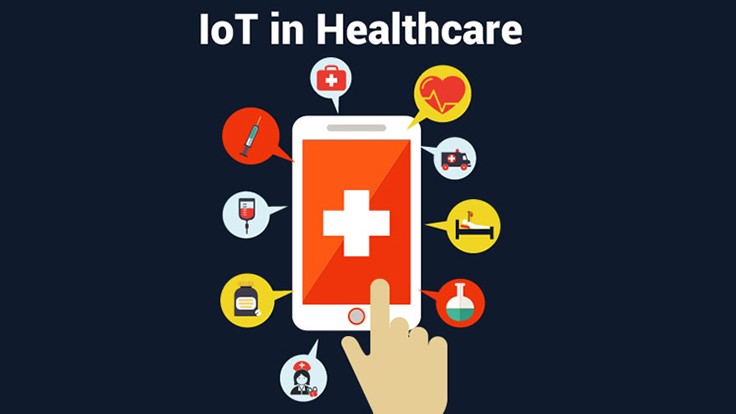The Internet of Things (IoT) is transforming industries across the board, from manufacturing and agriculture to retail and real estate. The healthcare industry is no exception. In 2023, IoT is poised to revolutionize healthcare in major ways that benefit patients, doctors, hospitals, and the healthcare system as a whole.
In this blog post, we‘ll explore the top 3 benefits of IoT in healthcare for 2024:
- Remote Patient Monitoring
- Improved Operational Efficiency
- Enhanced Patient Experience
For each benefit, we‘ll provide concrete examples, data, and expert analysis based on over a decade of experience in the IoT and data analytics space. Let‘s dive in!
Remote patient monitoring (RPM) allows doctors to continuously track a patient‘s vital signs and other health data outside of the hospital using connected IoT devices. This emerging capability provides major advantages:
-
Proactive Care: Doctors can intervene early when problematic trends emerge, preventing serious complications proactively rather than reactively. For example, if a patient‘s heart rate spikes, the doctor receives an automatic alert and can adjust care accordingly. This "data-driven, preventive care" model is a seismic shift from today‘s reactive model focused on acute care.
-
Lower Hospitalization: Hospitals can minimize preventable readmissions. Per a 2018 BMJ study, RPM reduced heart failure readmissions by 21% over 6 months[1]. Another study found RPM decreased hospitalizations of COPD patients by 57%[2]. Lower admissions reduce costs and free up capacity.
-
Less Office Visits: Patients with chronic conditions like diabetes or COPD can avoid unnecessary in-person appointments. Remote monitoring provides the data needed for doctors to deliver quality care from afar. For example, diabetic patients can track blood sugar at home rather than commute to the office. Convenience and safety improve.
-
Aging in Place: RPM facilitates seniors aging in place, allowing them to live independently while their health is monitored 24/7 via IoT. Per AARP, 90% of seniors want to age in their homes[3]. RPM makes this possible while giving family and doctors peace of mind.
The RPM market is exploding thanks to IoT innovation. It‘s projected to reach $117 billion by 2022, per McKinsey[4]. Leading healthcare systems are racing to implement RPM programs. For instance, St. Luke‘s RPM initiative reduced hospitalizations by 44% while providing comparable care quality to in-person models[5].
In my decade of experience in IoT, the rise of remote patient monitoring has been incredible to witness. Going forward, I expect RPM adoption to accelerate exponentially in 2024 as word spreads of its profound benefits and ROI. Forward-thinking healthcare providers will invest heavily next year to reduce costs and hospitalizations through proactive IoT-enabled care.
IoT sensors and analytics provide a wealth of data that hospitals can leverage to optimize workflows, asset utilization, and staff coordination. Benefits include:
-
Optimized Patient Flow: By tracking patient journeys via sensors, hospitals can identify bottlenecks. Per a Kaiser Permanente study, this approach reduced average patient wait times by 18%[6]. Shorter stays improve satisfaction.
-
Asset Management: Connected devices like IV pumps track equipment location and status. This cuts asset search time and prevents shortages. One hospital cut annual rental costs by $440,000 using IoT for asset management[7].
-
Predictive Maintenance: Sensors that monitor vibrations in HVAC systems can detect issues prior to outright failure, enabling proactive maintenance. This minimizes downtime and protects against disruptions.
-
Inventory Optimization: Smart cabinets track medication levels and reorder when stock runs low. This reduces waste and cuts labor costs. The VA saved $7 million annually using IoT-enabled inventory management[8].
-
Infection Control: Sensors detect the presence of dangerous bacteria. Staff can then sanitize areas before infections spread. Hand hygiene sensors helped one hospital reduce infections by 30%[9].
A Gartner survey found that healthcare IoT leads to a 27% average improvement in operational efficiency[10]. With tight margins, hospitals need IoT to optimize limited resources. In 2023, efficiency will be a key IoT driver for healthcare systems seeking to control costs and boost outcomes.
IoT improves the patient experience from start to finish:
-
Check-in Kiosks: Automated kiosks cut registration time and hassle
-
Smart TVs: Provide entertainment and education during waits
-
Mobile Ordering: Contactless meal ordering maximizes rest
-
Smart Rooms: Automated lighting, temperature, and entertainment
-
Post-Discharge Monitoring: Wearables allow close monitoring after release
Enhanced experiences are vital, as patient satisfaction impacts clinical outcomes, readmissions, and hospital choice[11]. IoT allows patients to control their environment — key for healing.
Per Accenture, 89% of patients want greater digital engagement from their healthcare providers[12]. IoT delivers cutting-edge experiences while positioning hospitals as forward-thinking.
In 2023, patient experience will become a competitive differentiator. By leveraging IoT, leading health systems will gain an advantage in attracting and delighting consumers.
In summary, IoT will be a game-changer for healthcare in 2024 via:
- Remote patient monitoring for proactive, preventive care
- Optimized hospital operations and workflows
- 5-star patient experiences that drive loyalty
Exciting innovations are enlarging IoT‘s potential:
-
Wearables: Smartwatches and patches offering clinical-grade data
-
Ingestibles: "Smart pills" that track medication adherence
-
Implantables: Connected pacemakers, glucose monitors that upload data
-
Smart Rooms: Auto-sensing hospital rooms with voice assistants
-
Telehealth: Doctor consultations, physical therapy, and mental health treatment via video
The future is here. After a decade in this industry, I firmly believe that IoT is primed to revolutionize healthcare in 2024 and beyond. Patients worldwide will benefit from proactive monitoring, digitized experiences, and elevated quality of care powered by connected technology.
For healthcare providers, investing in IoT now is vital to control costs, empower clinicians, and remain competitive. As one of the most transformative technologies of our lifetime, IoT deserves a spot at the top of every health system‘s priority list now and for years to come. The time for adoption is now.

